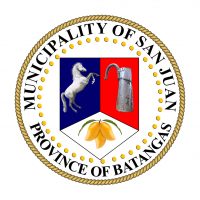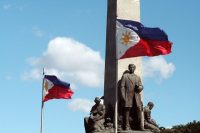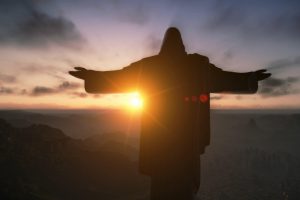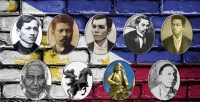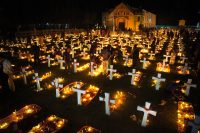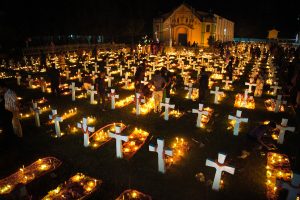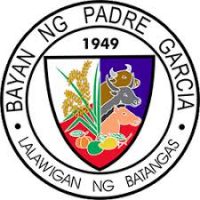Matuto kung paano dapat i-Brand online ang iyong negosyo o business idea!
Ang mga magrerehistro ay makakatanggap ng Electronic Certificate Of Participation mula sa Sangguniang Kabataan ng Barangay Bulacnin!
Online celebration of 172nd Founding Anniversary of San Juan, Batangas and Lambayok Festival on December 12, 2020.
The Philippines celebrates New Year’s Day with a public holiday every 1 January, as does most of the rest of the world. However, the celebrations really begin on New Year’s Eve and reach a high point with the turning of the clock from 11:59pm on 31 December to midnight on 1 January. Somewhat unusually, New Year’s Eve is also an official holiday here.
Fireworks, good food and good company, New Year’s resolutions, and greeting cards are all a part of the celebration in the Philippines. Attending midnight mass on 31 December is a practice of devout Roman Catholics. Firecrackers and loud noises are traditionaloy thought by some to scare off evil spirits, and leaving doors and windows open is supposed to let the good luck come in.
Parents may tell their children to jump as high as they can at midnight to help them grow taller. Others don polka dot clothes to make the new year more prosperous. And some put 12 fruits on display to symbolise the 12 disciples.
Dr. José Rizal, the Philippines’ National Hero, is celebrated on his namesake day every 30 December.
The first president of the Philippines, Emilio Aguinaldo, commemorated the first Rizal Day in 1898. Born on 19 June 1861, José Rizal is considered as the one of the greatest heroes in Philippine history, and is credited as starting the Philippine revolution against the Spanish colonisers.
Rizal, a man of many talents, was notably a ophthalmologist and a novelist. His two novels, “Noli me Tangere” (“Touch me not”) and the sequel “El filibusterismo” (“The Filibustering” or “Reign of Greed”) exposed the injustices brought on by the Spanish colonisers in the Philippines. Many scholars and historians would agree that it was the ideas in these two books that influenced the already discontented Filipinos to act against the Spanish.
Subsequently, he was arrested for treason and for being associated with the revolutionary forces (although he did not take part in any type of warfare). He was convicted on the grounds of rebellion, sedition and conspiring against the government, and was sentenced to execution by a firing squad on 30 December 30 1896. His death was the last straw for the Filipinos and thus began the end for the Spanish colonisers.
Official events centre around the main Rizal shrine, in Rizal Park in Manila. Flags are at half-mast and the President of the Philippines lays a wreath at Rizal’s shrine, as a symbol of the nation’s gratitude and reverence. As it is a public holiday, most people take the day off from work and spend time with family and friends.
Give Dad the ultimate adventure this Father’s Day with Batangas Lakelands! Treat him to a day trip filled with excitement and relaxation, topped off with a mouthwatering boodle fight platter. Celebrate the hero in your life surrounded by nature’s beauty and delicious flavors. #FathersDay #boodle #adventure #BatangasLakelands
Christmas in the Philippines celebrates the birth of Jesus Christ who, according to Biblical tradition, was sent by God to save people from sin and death. The holiday is held every 25 December.
The Christmas season in the Philippines is summed up in three words: faith, family and food – with the three intertwined in almost every event. Masses are held in churches leading up to Christmas Day, with many feasts held alongside them. The length of the season varies: Christmas can last from a few weeks to a few months. Christmas carols are played in the shopping centres and malls from as early as September until well into January.
A clear sign the Christmas season has truly begun is the hanging of star-shaped lanterns called parol in every public space and household. The parol, representing the Star of Bethlehem, is unique to the Philippines and is as quintessential to the season as Christmas trees and fake snow are to the Western cultures.
In the week leading up to Christmas, a series of masses called Misa de Gallo are held late every night. On Christmas Eve, there is (you guessed it) another mass held at midnight helpfully named, “Midnight Mass”, followed by a traditional family feast called Noche Buena running well into the early hours of Christmas morning.
A Christmas lunch is prepared for extended family where they open presents, eat, play games, sing karaoke, and eat some more. Older members of the family are revered and traditions, such as Pagmamano (taking the older family member’s hand and gently placing it on one’s forehead as a sign of respect), are practiced. The day ends only when people are too full to eat or are obliged to go to another household to eat some more.
On “Black Saturday,” preparations are made for the late-night Easter vigil at church. There, the Gloria is sung, and some call it “Glorious Saturday.” In some places, an effigy of Judas is hung and burned up, though sometimes, he is blown to pieces by firecrackers. At midnight, the fasting and mourning ends because it is finally the day on which Christ arose from the grave in victory.
A 4am on Easter Morning, a ceremony commemorates the meeting of Mary and Jesus after the Resurrection. The black-veiled image of Mary is unveiled by one or more people dressed up like angels, and sometimes, the veil is tied to balloons or a dove to be carried away in the air. The image of Christ also is unveiled, and flowers and confetti fall down on the statues of both Mary and Jesus. Bells ring and fireworks explode in the sky. Legend has it, however, that if the veil is removed only with difficulty, bad luck will accompany the year to come.
Check out the Biggest Travel, Trade, and Lifestyle Expo in Lipa City! 3-industries-in-1-Expo presented by Infinite Productions. This coming May 30-31, 2020 at The Outlets at Lipa.
For more details regarding this EXPO, contact the ff:
0917 533 5035 | 0933 879 3103
National Heroes Day in the Philippines is a public holiday to honour and remember the country’s National heroes.
These heroes are the men and women in Philippine history whose acts of courage enabled the Philippines to grow as a nation. Whilst National Heroes Day celebrates both known and unknown heroes, a National Heroes Committee was set up in 1995 to recommend those who should be counted as ‘National Heroes’. Following certain criteria, they found a select group of people who, they believed, should be honoured for their deeds. These were:
- Jose Rizal
- Andres Bonifacio
- Emilio Aguinaldo
- Apolinario Mabini
- Marcelo H. del Pilar
- Sultan Dipatuan Kudarat
- Juan Luna
- Melchora Aquino
- Gabriela Silang
Jose Rizal and Andres Bonifacio were two of the main proponents against Spanish rule. As a result, both were also given their own special days commemorating their lives and deeds.
National Heroes Day in the Philippines is held every last Monday of August. This date was chosen as it marked the beginning of the Cry of Pugad Lawin in 1896, the start of the Philippine revolution against the Spanish colonisers.
Filipinos celebrate National Heroes Day by attending local commemorations (e.g. parades, wreath laying at shrines, etc.). As it is a day off for most workers, people often spend the rest of the day with family and friends at parks, shopping malls and other public areas. Small firework displays may also be held during the evenings in some local areas.
All Saints’ Day in the Philippines is usually celebrated on the first and second day of November. In the Philippines, this holiday is often referred to as Undas.
All Saints’ Day is an important day in many Catholic countries. As the Philippines is the world’s third largest Catholic country, the country celebrates it with gusto. Traditionally, All Saints’ Day marks a Roman Catholic holiday that celebrates saints who were not awarded their own feast days. It also marks a celebration of the lives of the deceased.
All Saints’ Day in the Philippines is celebrated similarly to the way the holiday is marked in other former Spanish colonies like Mexico. On November 1st each year, people flock to their family plots in cemeteries across the country. They also use this holiday to hold a family reunion where groups of an extended family gather together.
The day is filled with music and food. There is also prayer and religious traditions. At the end of the day, people will often camp overnight in the cemetery to pay their respects to their dead relatives. Visitors remark that Filipinos are remarkably at home among their dead ancestors.
Filipinos are known for having great respect for their dead. To prepare for Undas, families will visit the graves of their ancestors before the holiday to clean up the area and perform maintenance. During the holiday, people will decorate the graves with flowers and candles. The cemeteries will come alive during this period.
In addition to these traditions, other Catholic traditions are also observed. Many cemeteries will hold a special mass during the day. The rest of the day is often marked by periods of prayer and the recitation of the Litany for the Dead.
This holiday is a mix of the observance of the dead and a joyful holiday. Families bring plenty of food and drink for their dead relatives. Some believe that the deceased are taking part in the feast alongside the living. While most bring food directly to the cemetery, other families will also leave food at home on altars for any relatives who aren’t buried in the cemetery.
The Philippines is the largest Christian country in Asia. As a result, much of the country shuts down over these two days. Offices and schools both close during this period.
The New Year is a celebration of the end and beginning of a year based on the lunar calendar. The holiday celebrates the events of the past year, while ushering in good fortune for the upcoming year. The lunar New Year celebrations in the Philippines are approached with the same exciting outlook as they are in Mainland China.

Padre Garcia, Batangas Foundation Day December 01, 2020
 WOWBatangas.com Your Source of Great News and Stories from the Province of Batangas, Philippines
WOWBatangas.com Your Source of Great News and Stories from the Province of Batangas, Philippines




